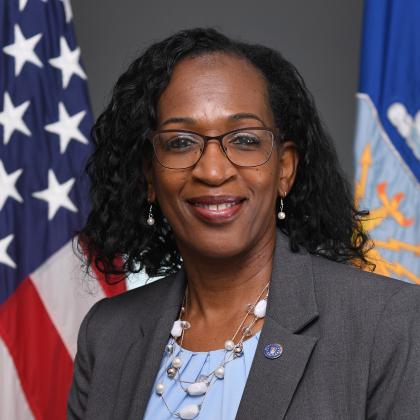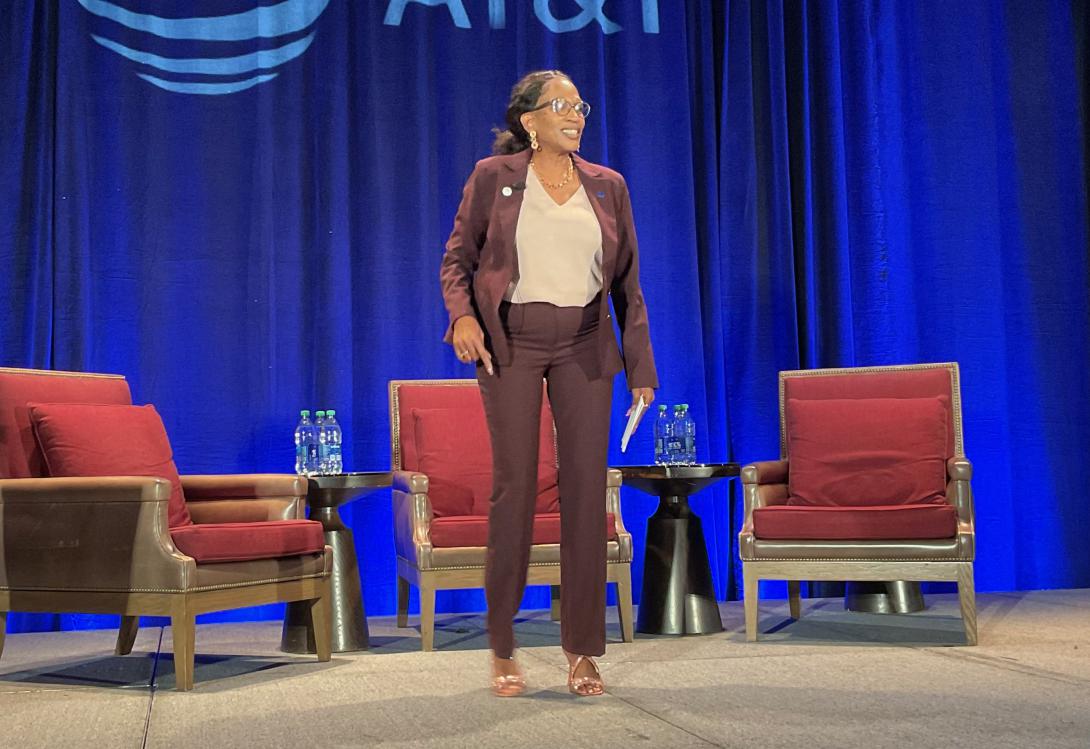Air Force Signs Research Agreements with Cloud Providers
The Department of the Air Force is moving forward with an enterprise cloud effort, known as Race to the Cloud. The program began in earnest last month when the service signed cooperative research and development agreements (CRADAs) with cloud service providers. The department is also relying on SAIC to help manage the integration effort.
The Race to the Cloud effort will increase the speed of moving applications to the cloud and help users be efficient in what is moved to the cloud, reported Venice Goodwine, director of Enterprise Information Technology, Department of Air Force Chief Information Office (CIO), speaking November 16 at the AFCEA Alamo ACE annual event in San Antonio.
Goodwine, who is in charge of management planning, governance and resourcing of enterprise information technology (IT) for the Department of the Air Force—which includes both the Air Force and the Space Force—is implementing enterprise-level digital transformation departmentwide.
Her purview of nearly $7 billion in information and cyberspace enterprise IT may seem like a good amount of money, she said. But given the transformation that has to happen across the department’s IT and cyberspace to position the services to face near-peer competitors—with platforms such as the Advanced Battlement Management System—it is not a huge amount for the capabilities warfighters need, Goodwine said. As such, the director has to be careful with any IT investments.
“I believe in order to be successful with digital transformation, there must be some tenets,” she said. “There must be foundational principles that you adhere to in order to be successful and have lasting change. ... And how do I manage that to actually make smart decisions about IT?”
The Race to the Cloud effort is part of that smart management, as it will help the services examine cloud needs and more adroitly leverage digital compute and storage. They would like to move about 100 applications over in the next 90 days.
“We just initiated ‘Race to the Cloud,’ where we have signed CRADA agreements with our cloud service providers, because why? They are going to help us move to the cloud faster,” Goodwine stated. “It’s about how do we get hundreds of apps within months into the cloud. Cloud service providers, you do this every day, so I'm going to leverage your skills, leverage your knowledge, your TTPs [tactics and procedures] to make sure that we can do this faster and better.”
Col. Justin Collins, USAF, senior material leader, Enterprise Information Technology and Cyber, who is stationed at Hanscom Air Force Base, Massachusetts, is managing the effort.
“The CRADAs that we've got in place are more of a contractual vehicle that we have with those service providers to allow them to help us really drive and accelerate the way we're bringing apps through the pipeline,” Col. Collins explained. “They have a lot of corporate expertise, and what they're bringing to the fight from an app migration standpoint. We are using those CRADAs to partner with SAIC, our integration contractor, to rapidly expand the capability that we have in the cloud and really accelerate those apps moving forward.”
The effort also will help to inform the department’s Cloud One evolution, Goodwine stated.
Two weeks ago, the department issued a request for information for its Cloud One Next effort, seeking industry input by December 5 on how to better manage and modernize Cloud One for a near-peer competitive environment.

It’s about how do we get hundreds of apps within months into the cloud. Cloud service providers, you do this every day, so I'm going to leverage your skills, leverage your knowledge, your TTPs to make sure that we can do this faster and better.”
Lauren Knausenberger, the department’s chief information officer, has specified the Cloud One platform to be the services' designated cloud service. The platform offers commercial cloud services with multiple cloud service providers, hardened computing environments, cost optimization and managed solutions for warfighters across development security operations and production environments. Cloud One also offers cloud services for Defense Information Systems Agency Impact Levels (IL) 2, 4, 5 and 6 authorizations—with IL 6, in particular, a rare feature.
“When we think about Cloud One, and extending it, with Ms. K [Knausenberger] putting out an edict that says Cloud One is our solution of choice, we have to make sure that we do a rationalization, that we're not just dumping everything to the cloud, there is a decision process or rather an application that does it in a way that is an efficient use of cloud,” Goodwine explained. “So, we are having those discussions.”
In addition, the Race to the Cloud effort would help decrease data center demand. Goodwine emphasized that users need to take into account the full costs of cloud and physical data center storage when making comparisons and deciding on compute and storage options.
“Think about this,” she said. “What is the fully burdened cost of being in a data center? Most of our functional owners or mission areas or system owners think, ‘I have just rack space there,’ or ‘I just have to pay for my system administrators.’ No, the fully burdened cost is the power, all the pipes, and yes, your system administrator, but how about the facility costs, and the installation environment that pays for it that we just assume. That is the fully burdened cost. When we think about comparing the cost of being in the data center versus the cost of being in the cloud, it has to be ‘apples to apples.’ If you don't have a fully burdened cost, it's [not a full comparison.]”
The Race to the Cloud CRADAs will help examine these tradeoffs, Goodwine continued. “Sometimes we say, ‘Well, it's easy for us just to go to a cloud service provider,’ and not look for an ‘apples-to-apples’ comparison,” she warned. “And so, we just want to make sure that we are making the right decisions about Cloud One.”
For the director, the Race to the Cloud effort is all about leveraging the commercial cloud expertise to move quickly through cloud decision making. “We gave them challenges,” she shared. “I don't want to say the number in public, but we’ve signed these CRADA agreements for a couple of reasons. One, because we wanted to make sure that we can learn from their best practices. And we wanted to make sure that because they do this as a business, how can we move faster.”






Comments